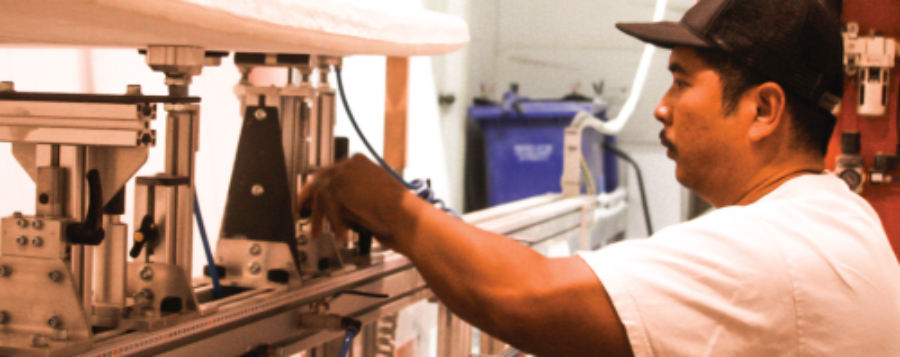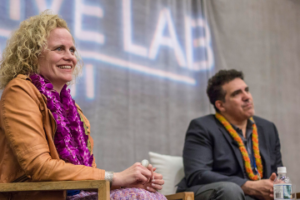Longtime surfer and self-professed tech junky Richard Peralta grabs a polyurethane surfboard blank leaning up against the wall. He sets it gently onto his CNC (computer numeric control) surfboard shaping machine, centering the board on the sled with the help of a green laser running the length of the board. Suction cups settle the board against several pressure-sensing actuators. He makes a few final adjustments to the surfboard’s measurements at a desktop computer in an adjacent room. A spinning, 12-inch carbide blade on a skeletal metal arm drops down and efficiently shaves off precise amounts of foam as the blank passes beneath it. Twenty minutes later, Peralta is holding a fine-tuned short board that’s ready to be glassed, sanded and surfed.
Peralta doesn’t claim to be a shaper. He’s a computer guy who cuts surfboards. After earning his IT chops working a federal job at Tripler Army Medical Center, Richard decided to make a career change from health care to surfboard manufacturing. Market research showed that all the CNC shaping machines on O‘ahu were on the North Shore.
Seeing an untapped market for cutting surfboards on the south shore, Peralta quit his job, bought a $60,000 shaping machine and put his computer skills to work mastering the software. Word spread quickly among south shore shapers that Peralta was bringin g in the best machine on the market, so the orders started coming in before the machine even cleared customs.
Using templates and hand tools, an experienced surfboard shaper can shape two to four surfboards a day. Richard can upload extremely precise three-dimensional measurements to the software and cut up to 14 surfboards a day. After a year and half, Richard’s cutting business is booming. Working for himself and succeeding in the surf industry is all the reward he could ask for, on top of riding a few good waves every day, that is.




